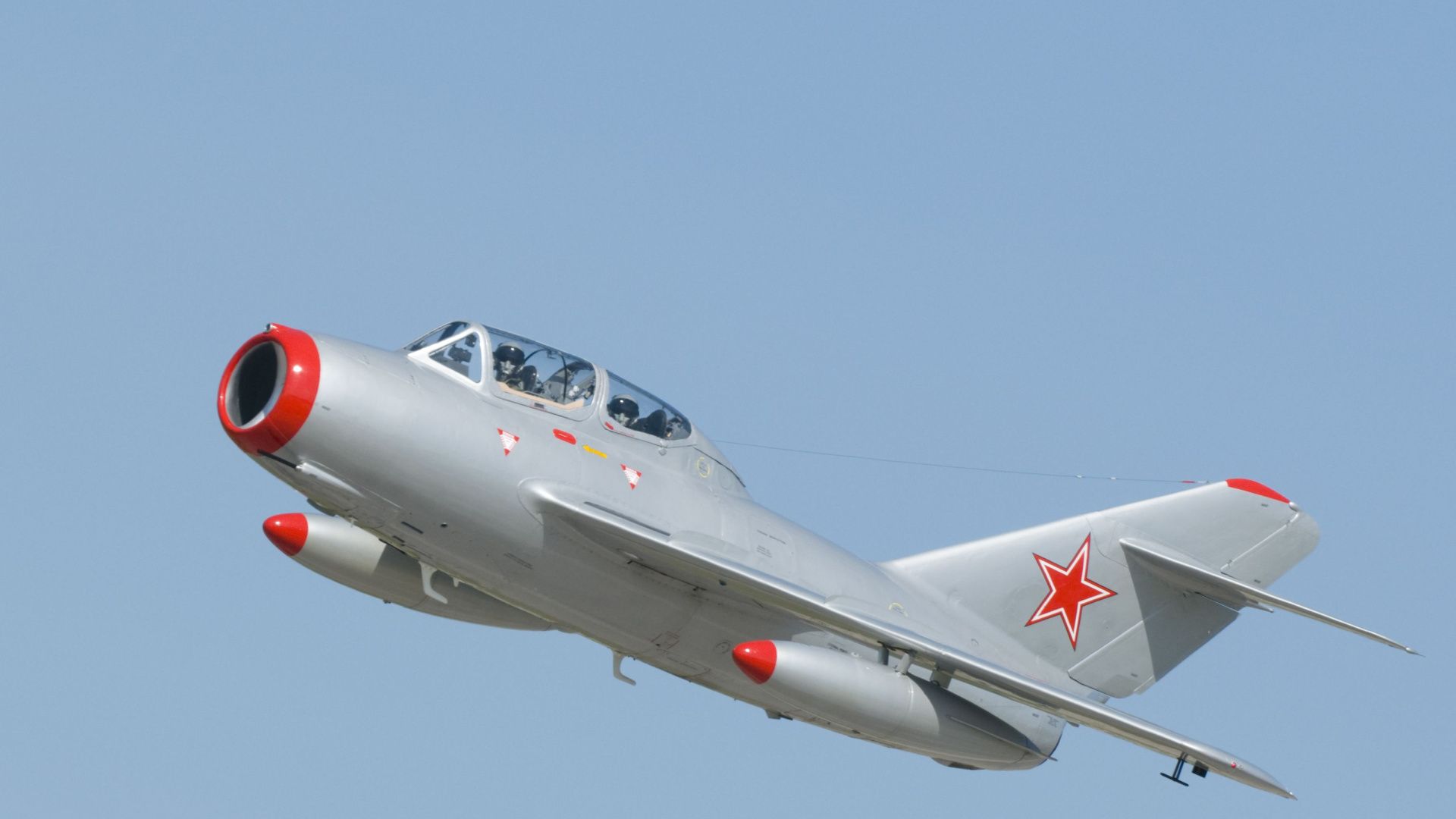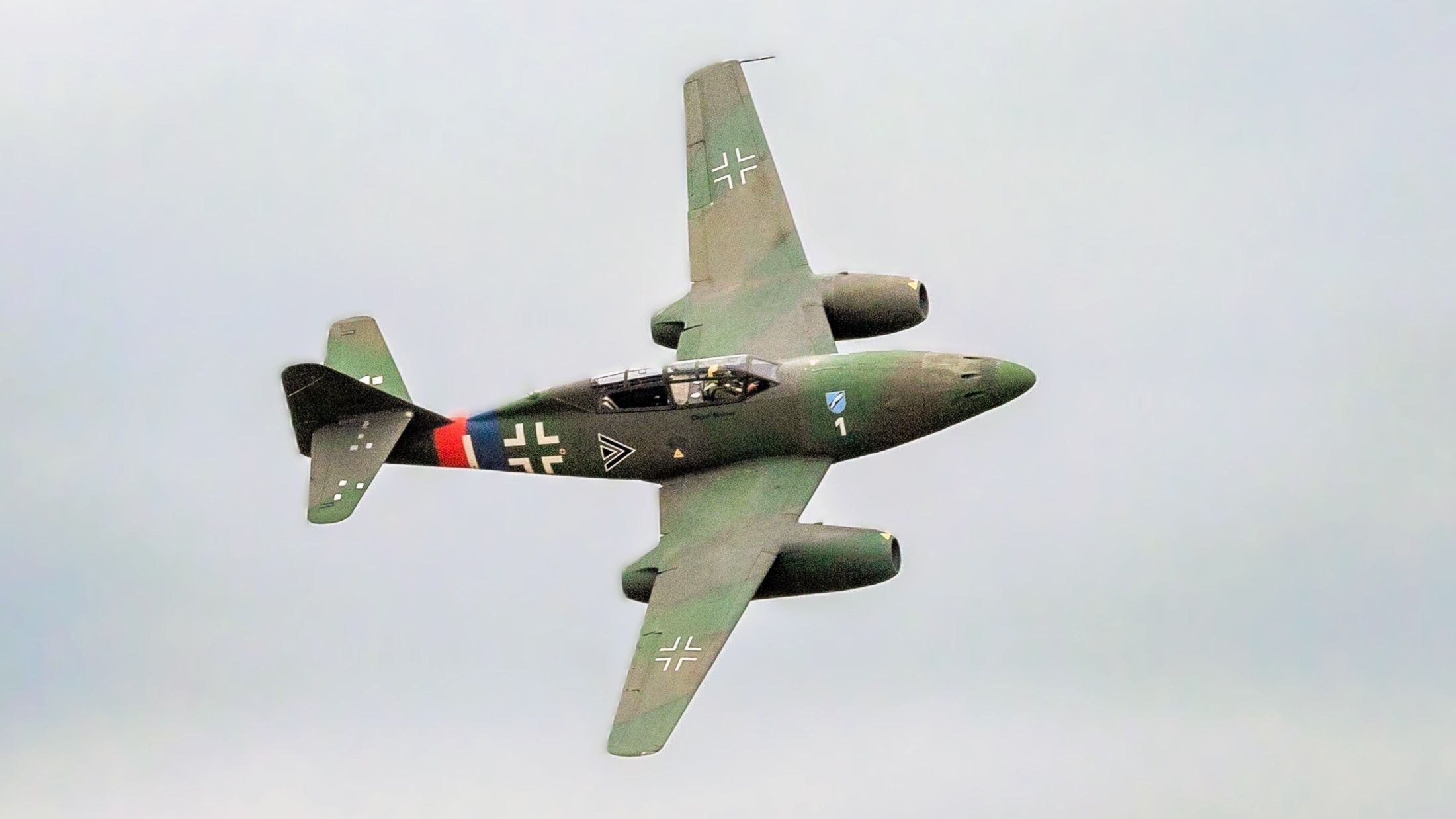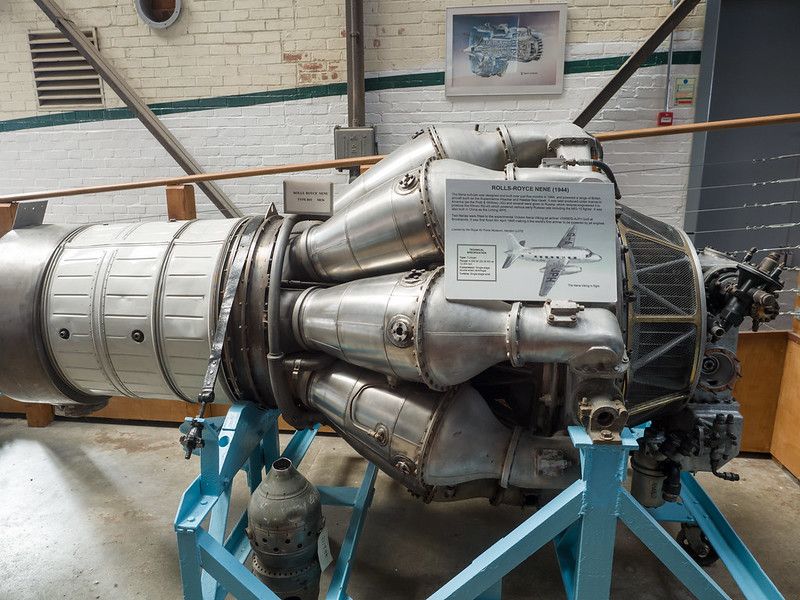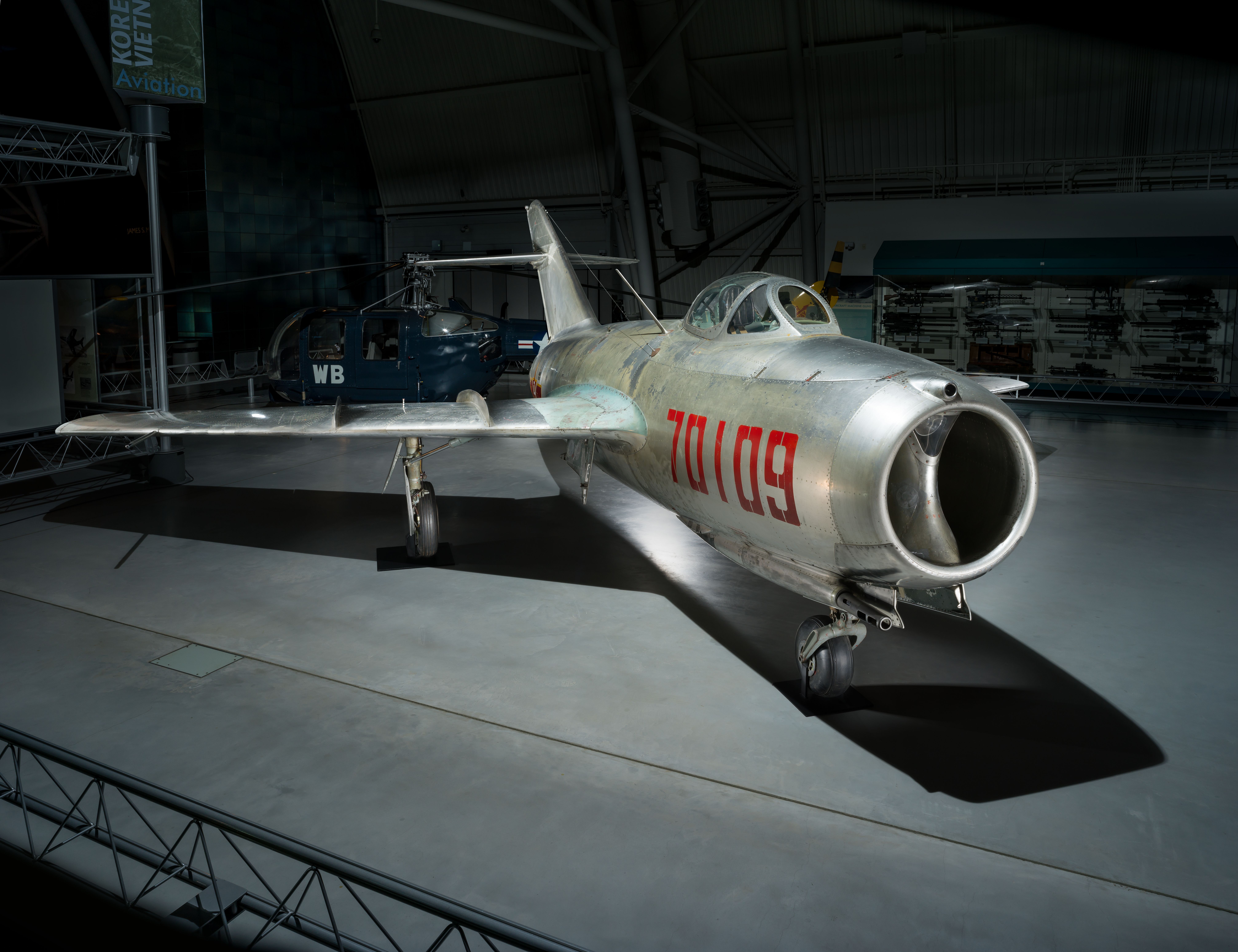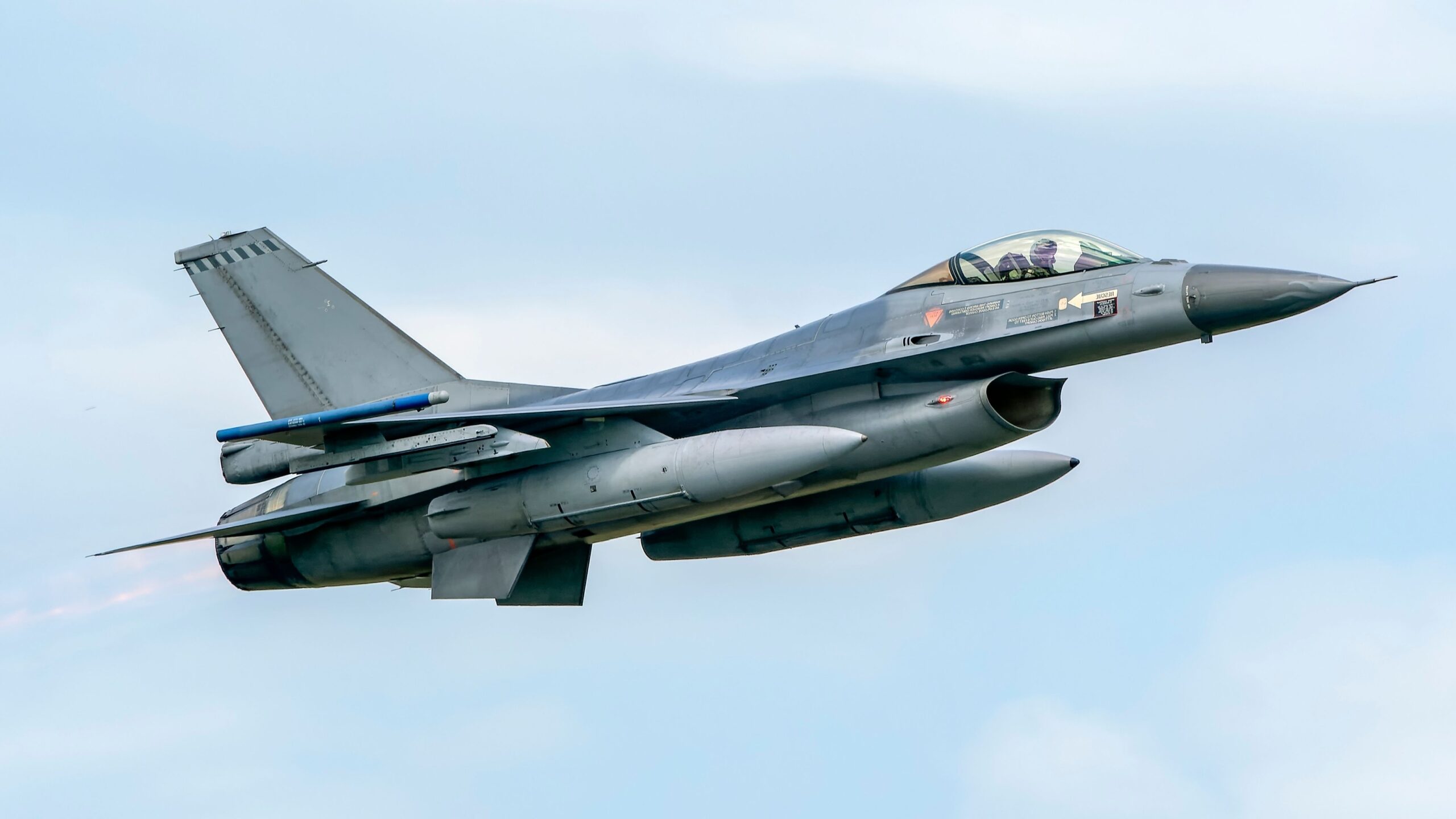Summary
- Soviets utilized British jet engine to power MiG-15.
- British sold engines to Soviets without foresight.
- MiG-15 initially outperformed US jets, leading to a deadly conflict in Korea.
The Soviets copied the British Rolls-Royce Nena jet engine and used it to power the advanced MiG-15 in one of the greatest modern British technological military blunders. Militaries have always copied each other, and while the Soviets came up with a number of interesting designs of their own, they were famous for copying the West. The Tupolev Tu-4 was famously a reverse-engineered copy of the Boeing B-29 Superfortress, while the Sukhoi Su-24 was something of a copy of both the F-111 Aardvark and the French Mirage G8.
Soviet-German jet engines were insufficient
While it is well known that the Soviets and Americans took captured German scientists back with them to their countries after WW2, what is less known is that the British were also world leaders in jet technology. When the war came to an end, only the Germans and British had deployed jets in combat (the Americans and Japanese were close, but didn’t). Out of the big powers, the Soviets were a noticeable laggard.
Photo: Wirestock Creators | Shutterstock
The Red Army captured German scientists, research facilities, and prototypes like the Jumo 004 and BMW 003 turbojets (designed for the Me-262 and He-162 jet fighters). The Soviets then went to work building a jet from German engines.
In 1946, the year after the war, they developed the Jumo-powered Yak-15 and the BMW-powered MiG-9 (the latter was faster). But contrary to what many might think, German turbojets suffered from very short lives and just couldn’t generate the thrust needed for the next stage of jet fighter designs.
A baffling British blunder
Soviet engineers suggested that they needed to acquire the more advanced British Rolls-Royce Nene centrifugal-flow compressor turbojets (which could deliver 5,000 lbs of thrust). According to the National Interest, Joseph Stalin is said to have replied, “What fool will sell us his secrets?”
The Soviet designer Viktor Kilmov visited Great Britain in 1946, and the British surprisingly agreed to sell their advanced jet engines to the Soviets on the condition that they wouldn’t copy them or use them for military purposes. The Soviets agreed and immediately set about reverse engineering the dozens of Nenes sold to the Soviet Union in 1946 and 1947.
However, it seems the British were rather naive at the time. While Winston Churchill had always distrusted the Soviets, by 1946, he was out of power, and the Labour Party ruled the country. The British had just spent years aiding the Soviet Union with breathtaking amounts of military aid to keep the Soviets in the fight against Nazi Germany.
|
Britain’s advanced Rolls-Royce Nene jet engine |
|
|---|---|
|
Type: |
Centrifugal compressor turbojet engine |
|
First run: |
27 October 1944 |
|
Number built: |
1,139 |
|
US version: |
Pratt & Whitney J42 (built under license) |
|
Notable applications: |
Canadair CT-133, Silver Star Dassault Ouragan, de Havilland Vampire, Grumman F9F Panther, Hawker Sea Hawk |
|
Max thrust: |
5,000 lbf |
During the war, the Royal Navy sent countless convoys through perilous U-boat-infested waters to give the Soviet Union the needed aid. Perhaps by early 1946, the British had not realized that the Cold War was starting, and their former Soviet ally was turning against them. The British were also short on cash and struggled to replace the US for wartime Lend-Lease at the time.
Birth of the MiG-15
The Soviets built the MiG-15 (code-named Fagot), equipped with reverse-engineered British engines. It was faster than the contemporary US F-80 Shooting Star and the British Meteor F8, flying up to 678 mph.
Photo: National Air and Space Museum
The MiG-15 proved maneuverable with a great climb rate. The Soviets went on to build around 12,000 of them. MiG-15s soon found themselves supporting the Chinese Communists against the Chinese Nationalists during the post-war Chinese Civil War. Soon after that, they were dogfighting American Sabers in the Korean War.
|
MiG-15 “Fagot” |
|
|---|---|
|
Introduced: |
1949 |
|
Service ceiling: |
50,900 feet |
|
Number built: |
Approx 18,000 (including 6,000 under license in China, Poland, and Czechoslovakia) |
|
Top speed: |
678 mph |
|
Powerplant: |
1 × Klimov VK-1 (license-built in China as Wopen WP-5) |
Early in the Korean War, MiG-15s outperformed not only the aging Corsair and Mustang fighters but also US F-80 fighters, and it became difficult for the US-allied forces to protect the B-29 bombers. The United States soon rushed its new F-86 Sabre into the fight, and the two jets would go toe-to-toe in countless clashes over “MiG Alley” along the Chinese border.
The MiG-15s and Sabre were closely matched, and by the end of the war, the US Air Force reported losing 84 F-86 Sabers (to all causes) while combined Soviet, Chinese, and North Korean recorded losses were around 650 (to all causes). It is unclear how many Sabers and MiG-15s were shot down by each other.
The MiG-15 evolved into the MiG-17 and MiG-19 (which would soon clash with the US in Vietnam). Incredibly, North Korea is still believed to have F-5s and F-6s (Chinese copies of the MiG-17 and MiG-19 in service). Reverse engineering the British Nene turbojet enabled the Soviet Union to advance in the early jet race and compete with the US and Western Europeans through the Cold War until it collapsed in 1991.

